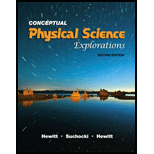
Whether the given bonds are ionic, covalent, or neither.
Answer to Problem 6TE
The types of bonds are as follows;
O with F - covalent
Ca with Cl - ionic
Na with Na - neither
U with Cl - ionic
Explanation of Solution
The overall number of unpaired valence electrons existing in the valence shell undergoes electron interaction to form a bond that is covalent bond. Thus, the numbers of unpaired valence electrons are required for bonding in an atom. Whereas an ionic bond is a bond present between ions and the atoms involved in ionic bonds must have a high difference in electronegativity. The atoms having low electronegativity possesses tendency to lose electrons and the atoms with high electronegativity tend to gain electrons.
The electrons are arranged according to the energy level in shells outside the nucleus and the electrons present in the last outer shell of an atom are called the valence electrons of an atom.
The bond between O and F, they both have high number of electrons in the valence shell and thus tend to share electrons to form a covalent bond.
The bond between Ca and Cl, the calcium has only two electrons in the outermost shell and thus tends to donate their electrons while Cl has seven electrons in the valence shell and thus tends to gain electrons to form an ionic bond.
The bond between Na and Na, the sodium has only one electron in the outermost shell and thus tends to donate their electron but there is no tendency of sodium atom to bond with another sodium atom.
The bond between U and Cl, since the uranium is metal and have the tendency to donate their electrons while Cl has seven electrons in the valence shell and thus tends to gain electrons to form an ionic bond.
Conclusion:
Therefore, the types of bonds are as follows;
O with F - covalent
Ca with Cl - ionic
Na with Na - neither
U with Cl - ionic
Chapter 18 Solutions
Conceptual Physical Science Explorations
Additional Science Textbook Solutions
College Physics: A Strategic Approach (3rd Edition)
University Physics Volume 1
Physics for Scientists and Engineers with Modern Physics
The Cosmic Perspective Fundamentals (2nd Edition)
Physics (5th Edition)
Essential University Physics: Volume 1 (3rd Edition)
 College PhysicsPhysicsISBN:9781305952300Author:Raymond A. Serway, Chris VuillePublisher:Cengage Learning
College PhysicsPhysicsISBN:9781305952300Author:Raymond A. Serway, Chris VuillePublisher:Cengage Learning University Physics (14th Edition)PhysicsISBN:9780133969290Author:Hugh D. Young, Roger A. FreedmanPublisher:PEARSON
University Physics (14th Edition)PhysicsISBN:9780133969290Author:Hugh D. Young, Roger A. FreedmanPublisher:PEARSON Introduction To Quantum MechanicsPhysicsISBN:9781107189638Author:Griffiths, David J., Schroeter, Darrell F.Publisher:Cambridge University Press
Introduction To Quantum MechanicsPhysicsISBN:9781107189638Author:Griffiths, David J., Schroeter, Darrell F.Publisher:Cambridge University Press Physics for Scientists and EngineersPhysicsISBN:9781337553278Author:Raymond A. Serway, John W. JewettPublisher:Cengage Learning
Physics for Scientists and EngineersPhysicsISBN:9781337553278Author:Raymond A. Serway, John W. JewettPublisher:Cengage Learning Lecture- Tutorials for Introductory AstronomyPhysicsISBN:9780321820464Author:Edward E. Prather, Tim P. Slater, Jeff P. Adams, Gina BrissendenPublisher:Addison-Wesley
Lecture- Tutorials for Introductory AstronomyPhysicsISBN:9780321820464Author:Edward E. Prather, Tim P. Slater, Jeff P. Adams, Gina BrissendenPublisher:Addison-Wesley College Physics: A Strategic Approach (4th Editio...PhysicsISBN:9780134609034Author:Randall D. Knight (Professor Emeritus), Brian Jones, Stuart FieldPublisher:PEARSON
College Physics: A Strategic Approach (4th Editio...PhysicsISBN:9780134609034Author:Randall D. Knight (Professor Emeritus), Brian Jones, Stuart FieldPublisher:PEARSON





